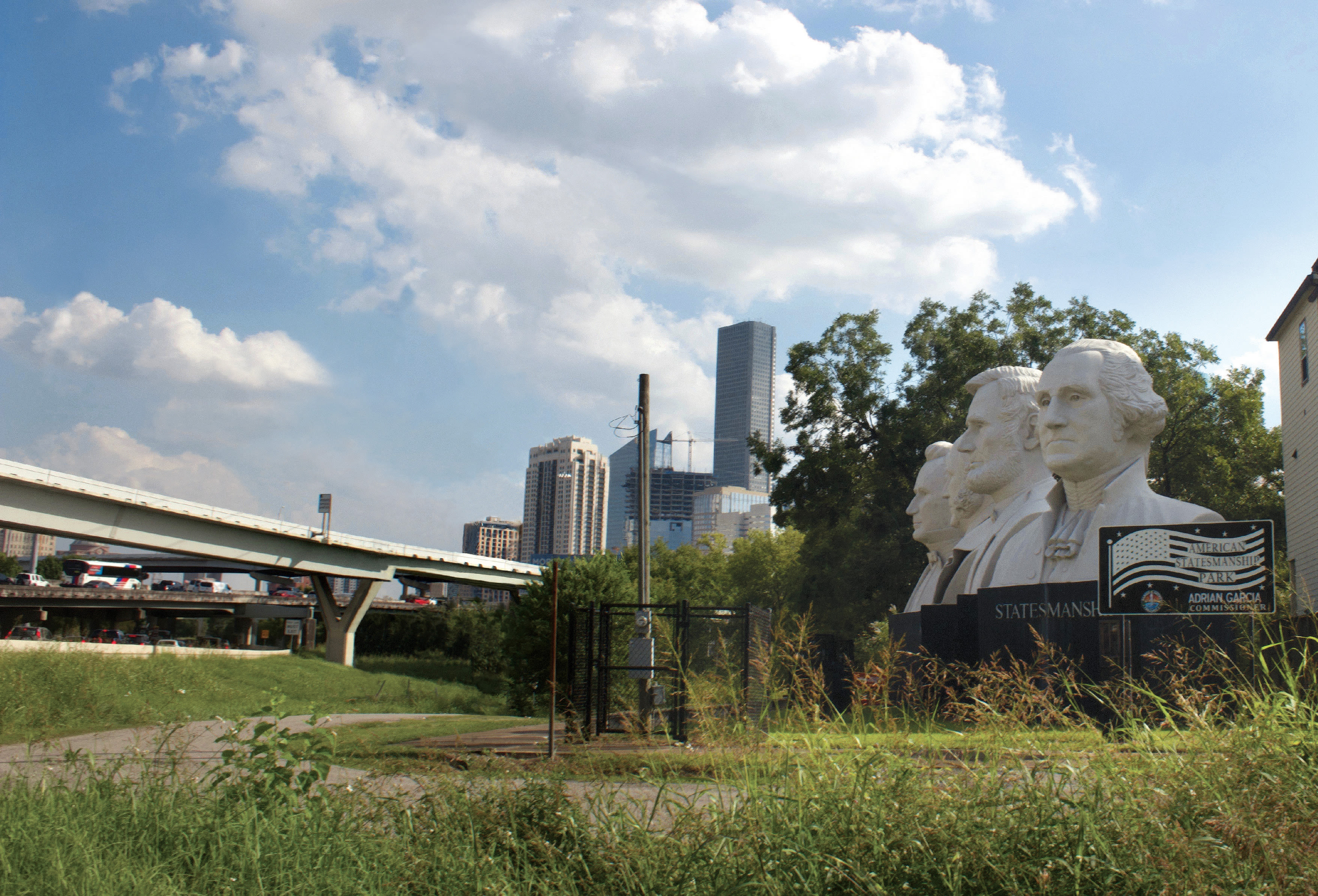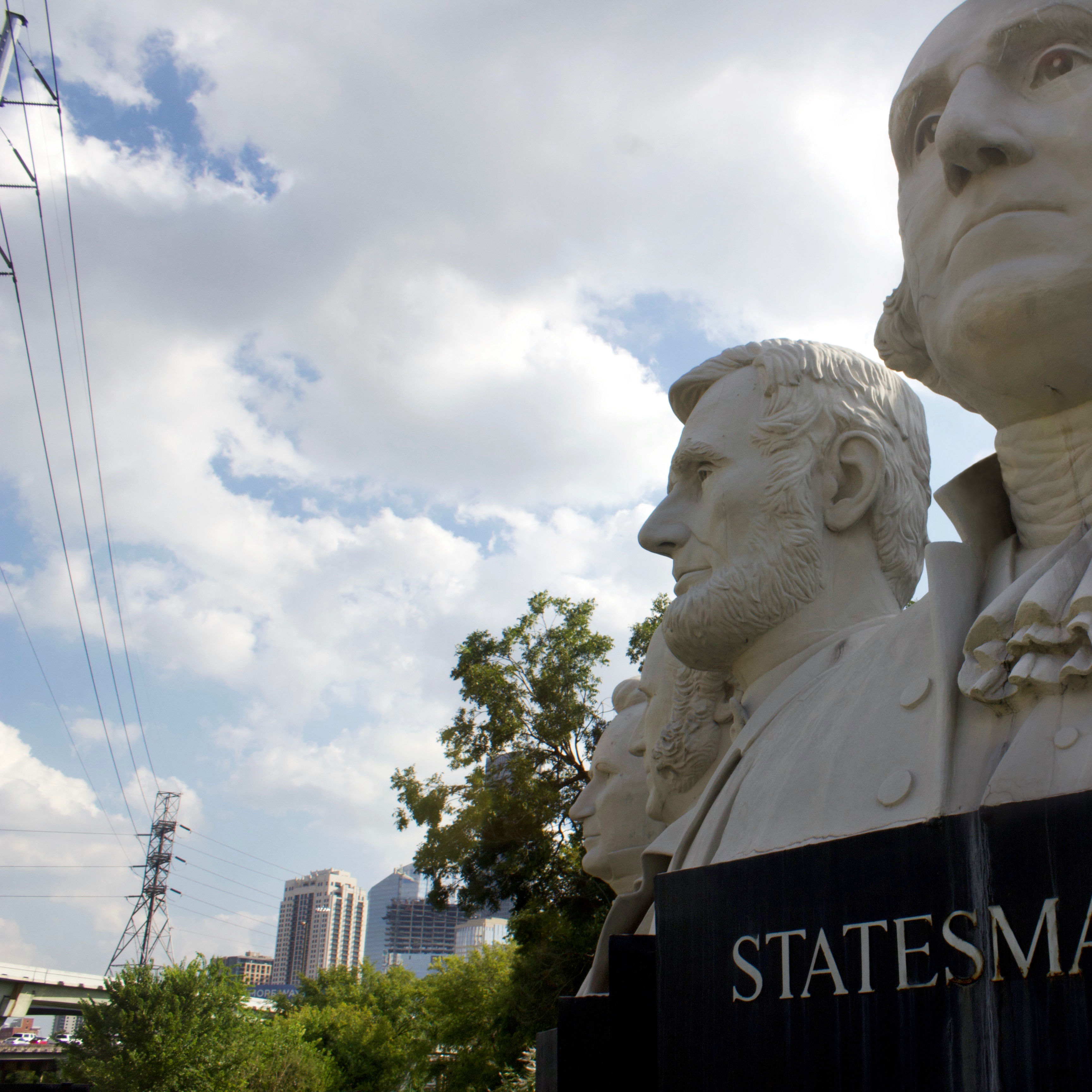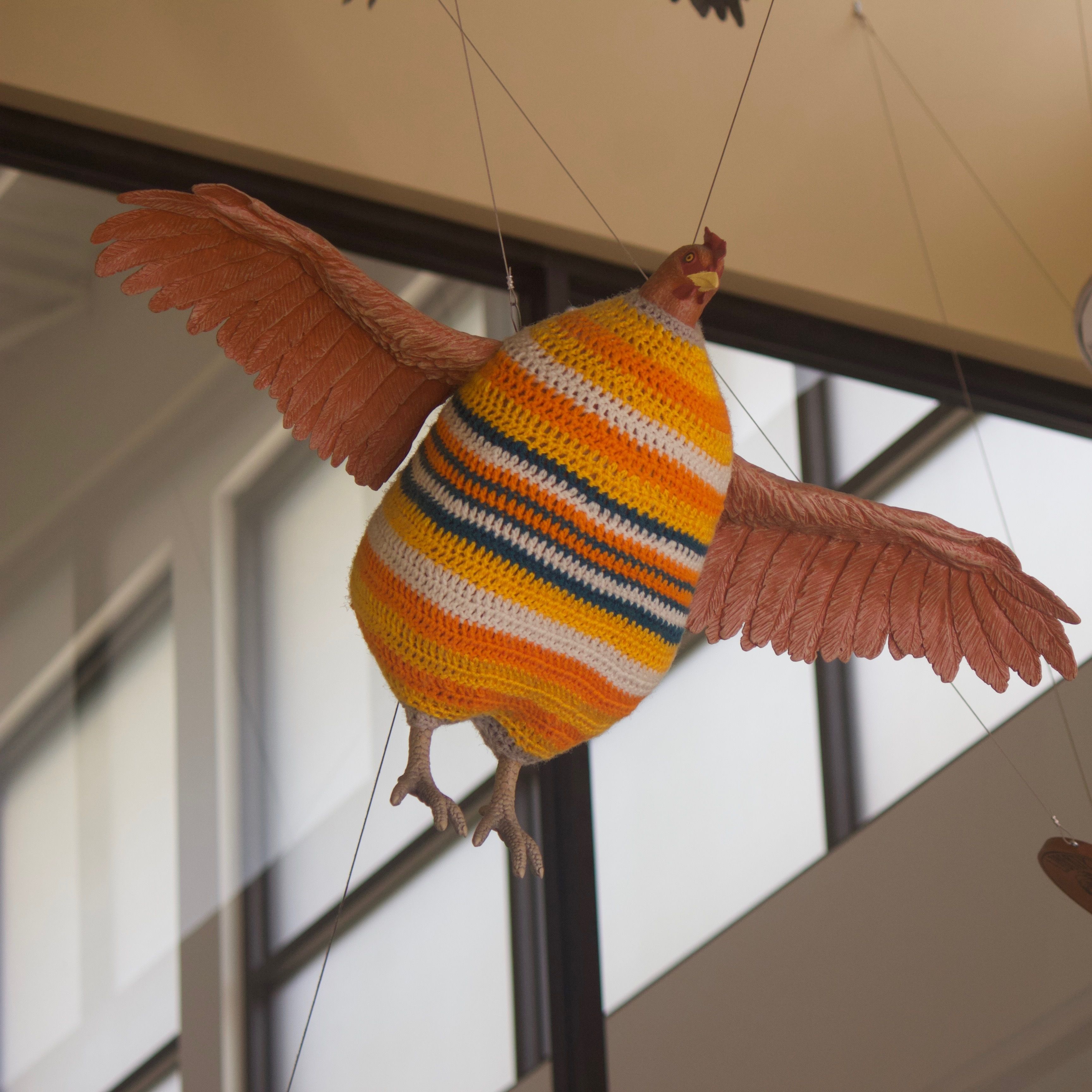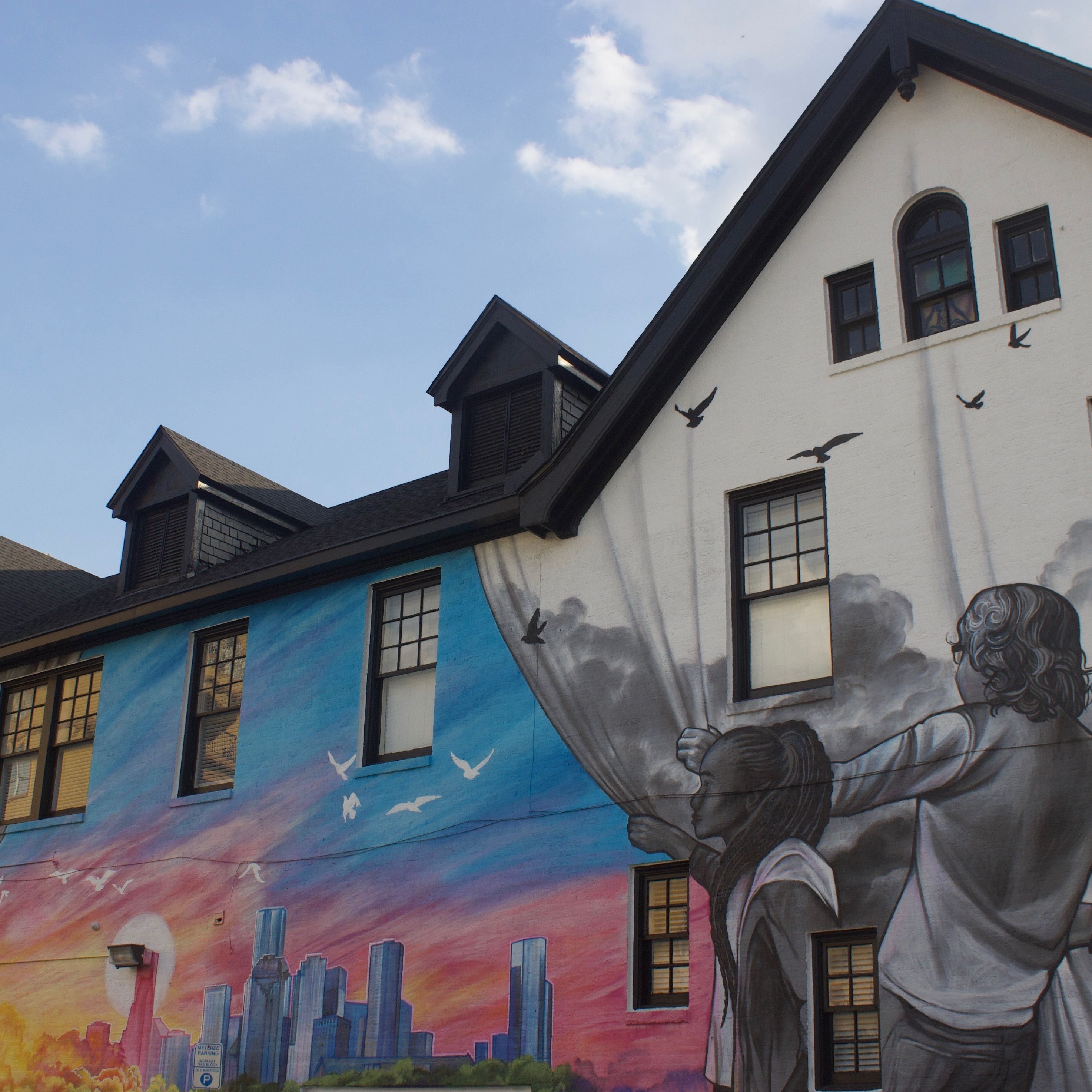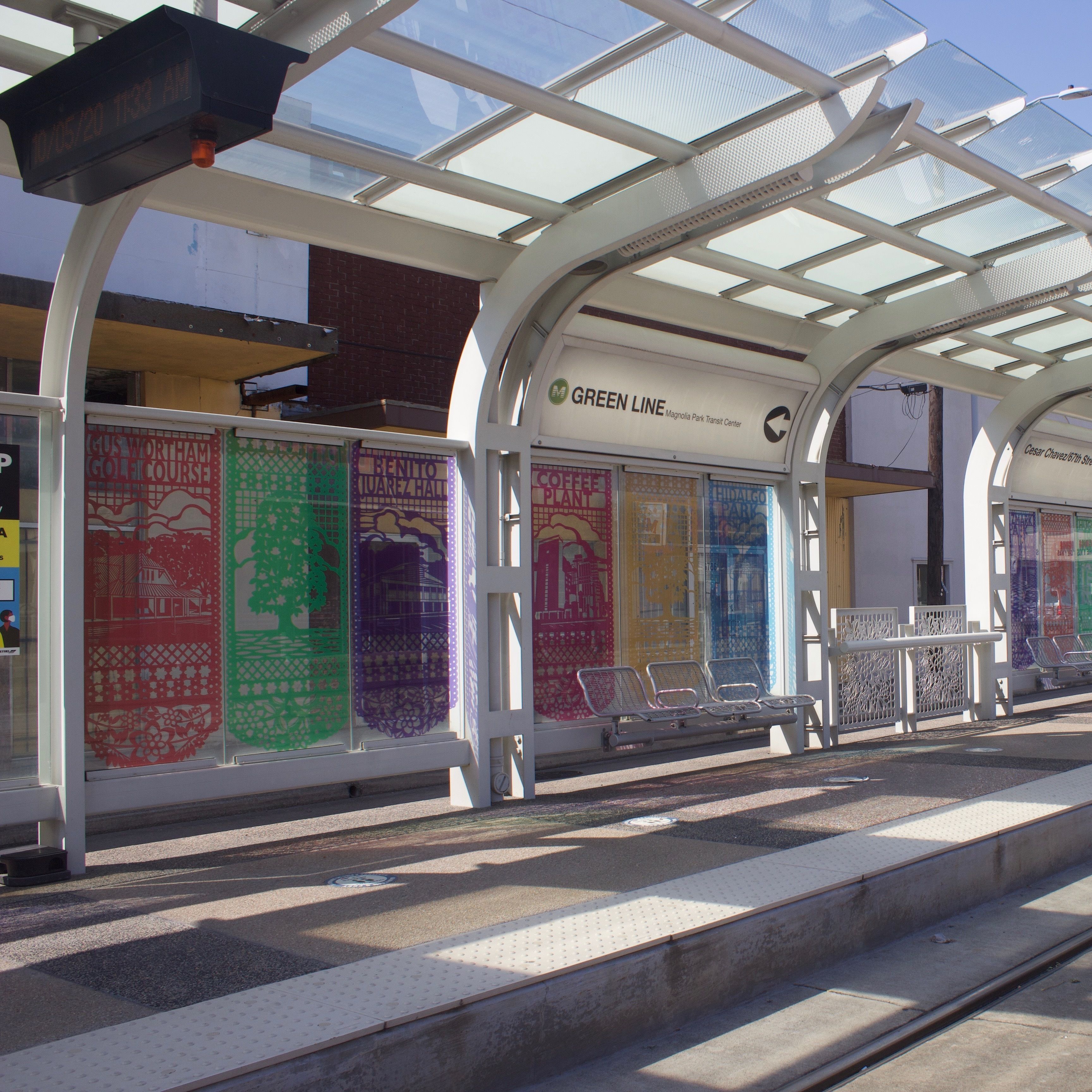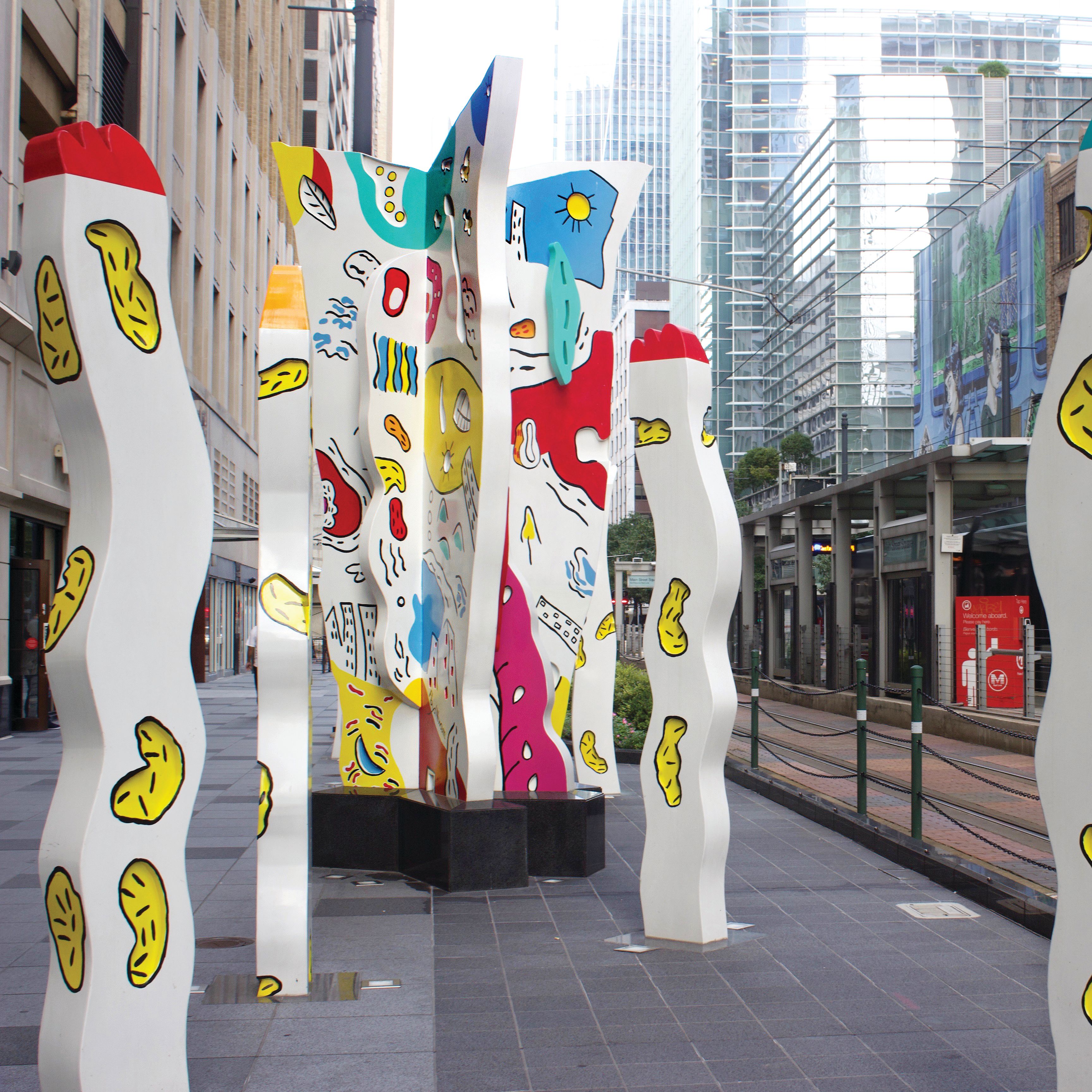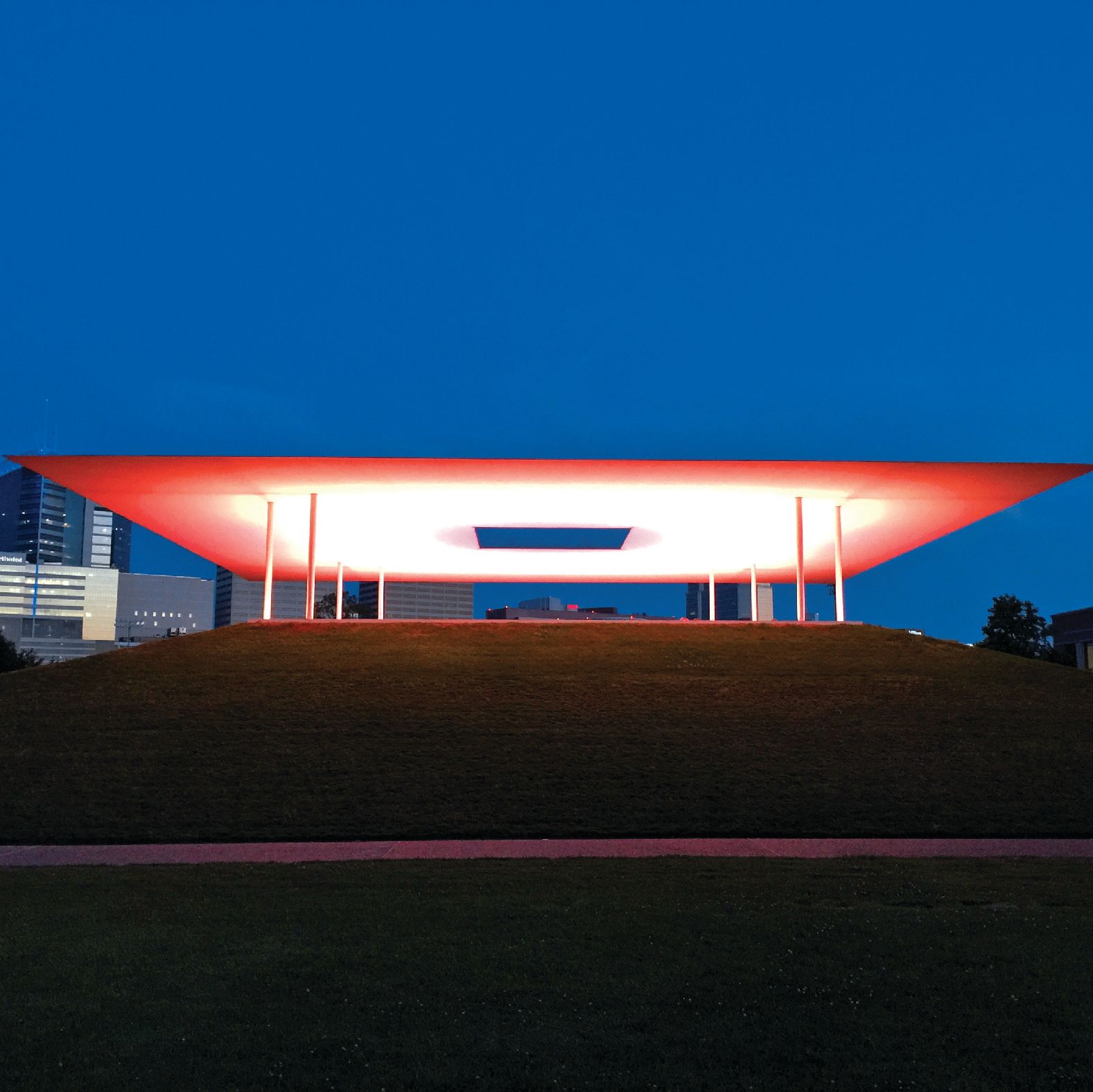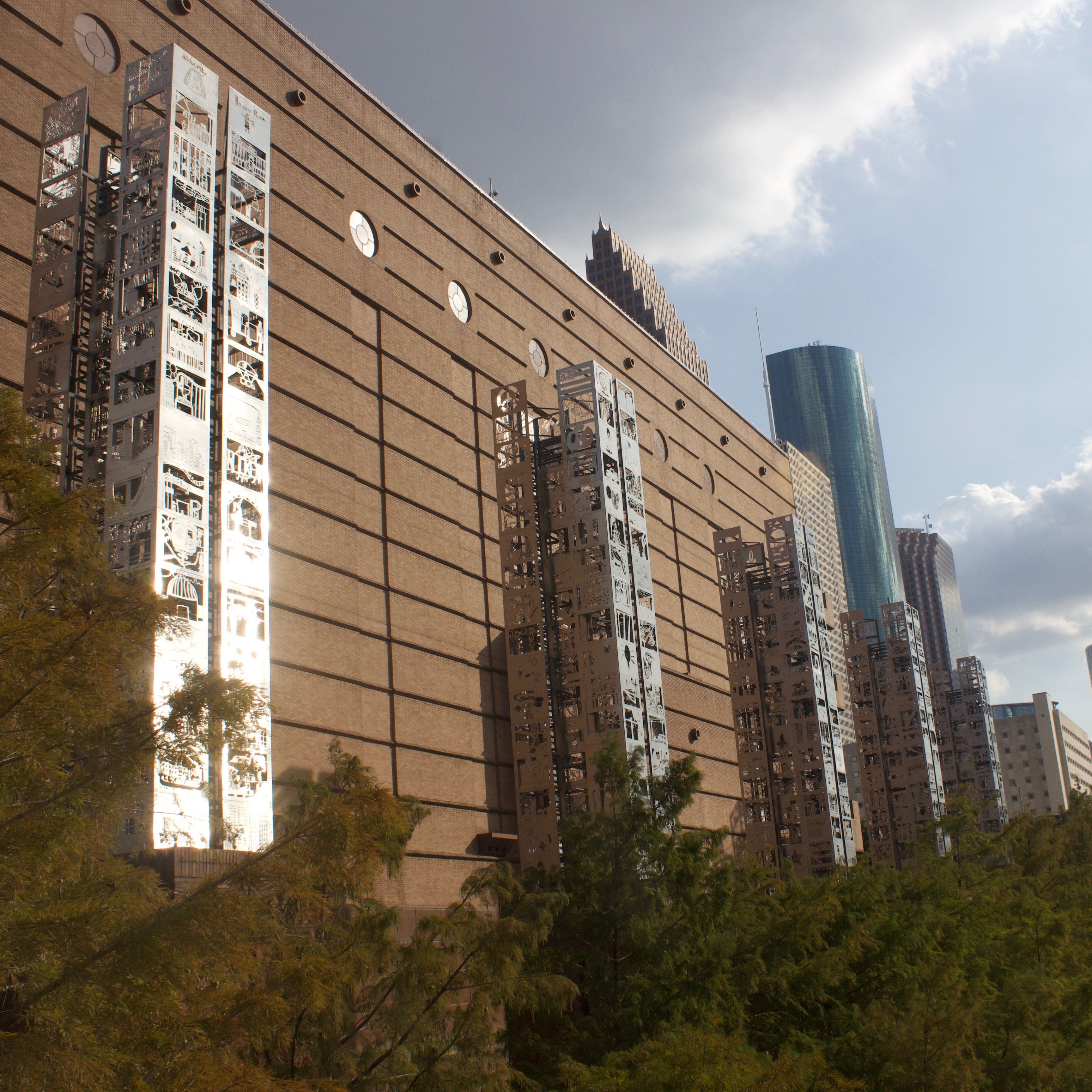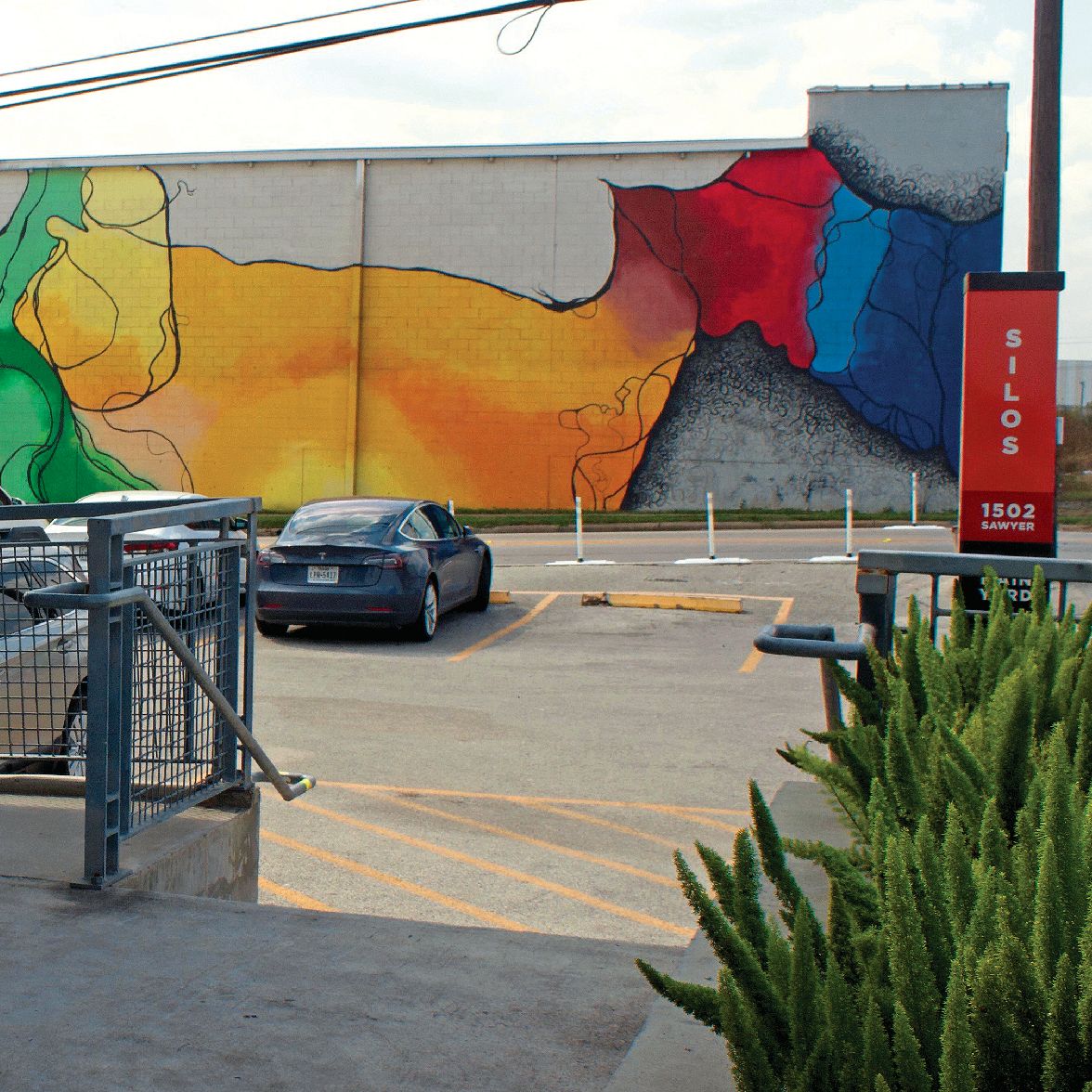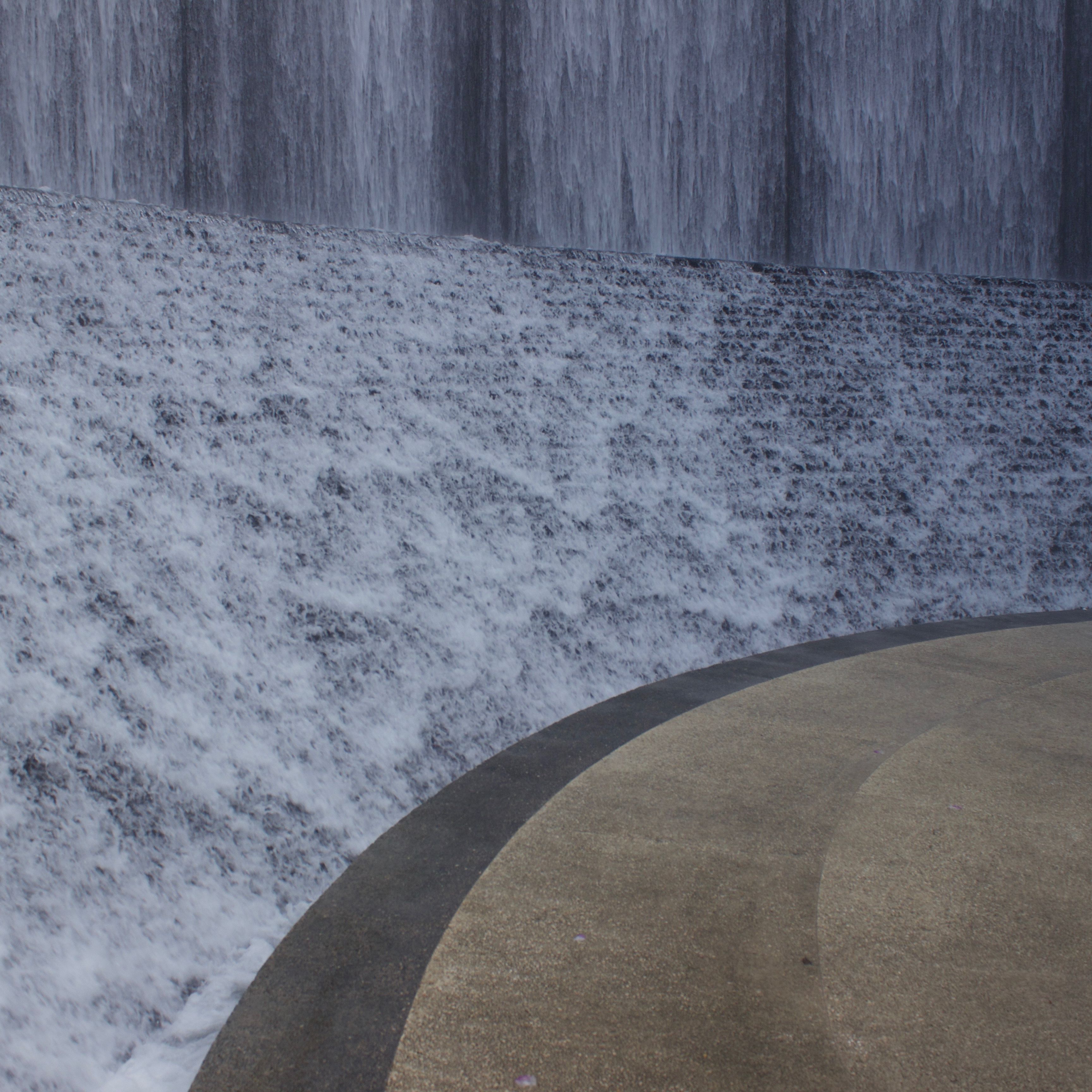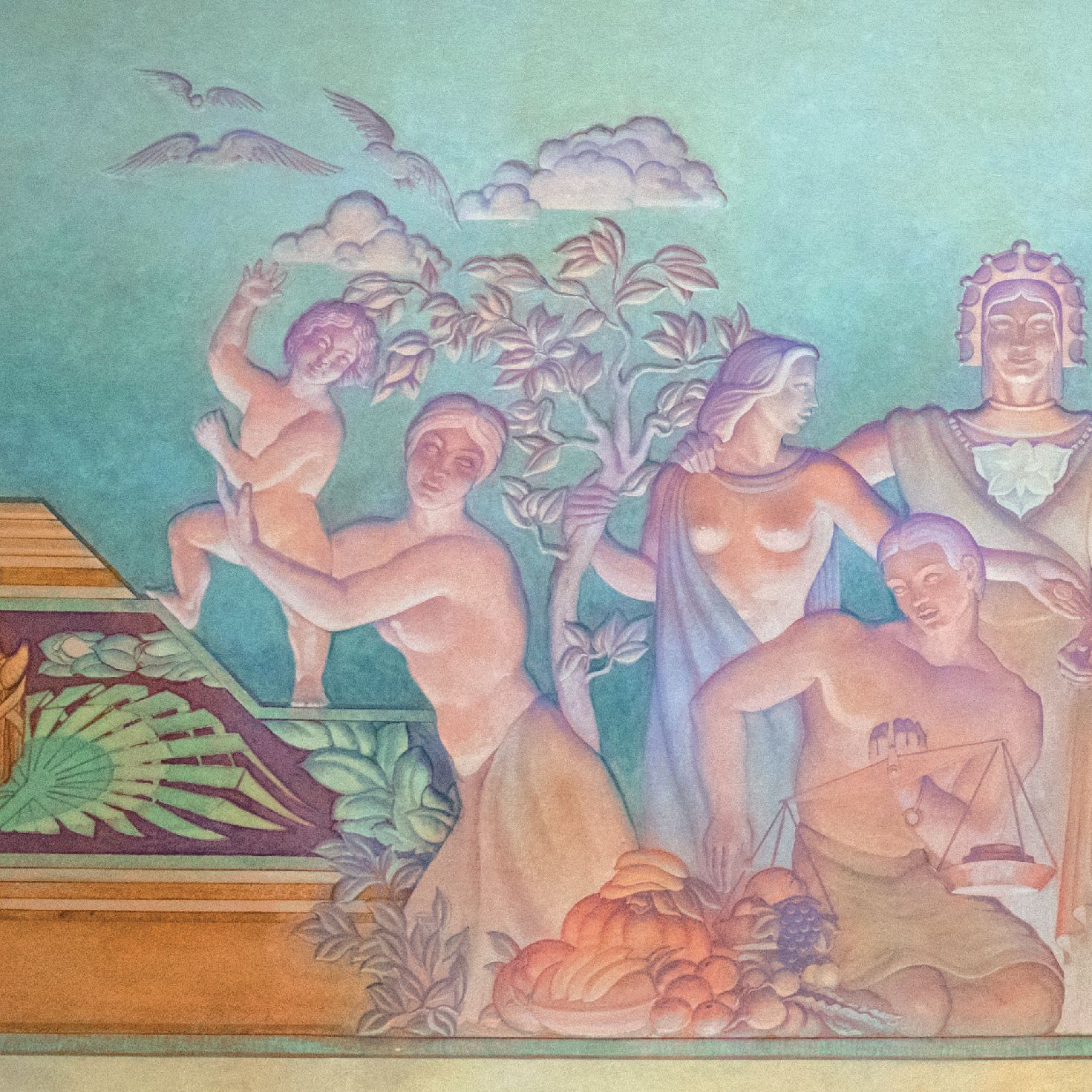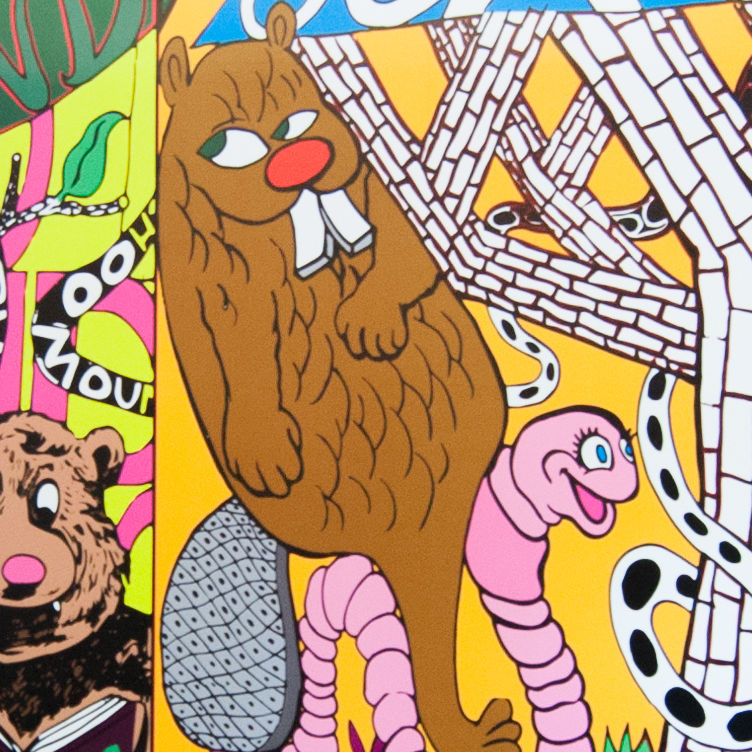You’re walking along Fifth Ward’s Lyons Avenue, jamming to the music in your earbuds, when you spot a mass of wooden boards ripping through the walls of a nearby house, painted and natural-toned planks frozen in the air in a wave of angles, a sight that leaves you feeling as if you’ve walked right into a demolition zone frozen at the point of destruction, and you find your heart is pounding as you take in the forever-exploding vortex of wood that is Fifth Ward Jam.
The miracle of this moment—stumbling upon a work of tangible, eviscerating feeling in the middle of one of Houston’s oldest neighborhoods—is how commonplace it now is.
“Public art that was being made in 1999 and 2000 is going to be a little bit different than the public art that is getting made right now in 2020, and was obviously different than the public art that was being made in the 1930s,” says Jimmy Castillo, director of the Houston Arts Alliance’s Civic Art + Design, which is charged with implementing the city’s art program. “Yet all of that is out and around and available, and it sort of creates a depth of history, a depth of experience, to anybody getting a sense of Houston’s culture.”
Adds María Gaztambide, director and chief curator of UH’s public art system, one of the oldest collections in the city, “I think a lot of people in the national stage don’t realize the wealth of public art that exists in the city of Houston,”
Once Houston’s biggest claim to public art fame was a few privately funded statues (including one of the earliest, a rendering of Confederate Commander Dick Dowling that presided over Hermann Park’s Cambridge Street entrance from 1905 until it was removed in 2020). The odd mural was thrown up, of course, but for decades, if you really wanted to find creations of unexpected beauty smacked down in the middle of town, most Houstonians would have advised you to go check out Austin.
However, that began to change in the 1990s. The concept of public art—pieces that are located in accessible places where the entire community can engage with them—became increasingly appealing. Everyone loved the Waterwall, after all. Why wouldn’t we want more sculptures, murals, and other gems from the minds of some of the world’s best artists nestled in plain sight where everyone could enjoy them? So the thinking went. Starting in 1999, the City of Houston began devoting a small portion of its budget to public art projects.
Since the passage of the Civic Art Ordinance, the city’s official art collection has swelled to more than 600 pieces, ranging from the modern cultural icon Synchronicity of Color to the suspended forms of Soaring in the Clouds that turn above the heads of visitors to the George R. Brown Convention Center.
We’ve been all the better for every piece that has been added to Houston’s infamously rambling, unzoned, concrete urban sprawl. “Public art, in general, adds a little bit of magic to your life,” explains Castillo. “It’s something that is sort of beyond functional, something that can be beautiful, maybe exciting, that sort of interrupts the mundane aspects of your everyday life.”
And engagement really is the key. “Visiting museums and, even more so, galleries can be a kind of intimidating experience,” says Lea Weingarten, the founder and head of the art advisory firm Weingarten Art Group, which manages the art projects and collections of public, private, and corporate entities across the globe. Public art meets everybody exactly where they are, invites them in, and opens their minds to infinite possibilities and conversations, she contends. “Because of that we’ve seen this beautiful blossoming of interest in the arts,” she says. “They want to feel a part of it; they want to understand it.”
Public art isn’t just a way for us to tap into our creative potential, it’s also a way for the city to express itself—seriously, just think about our most famous murals, from the famed words on the railway bridge over I-45 exhorting drivers to Be Someone as they approach Downtown (yeah, yeah, we know it’s technically a tag) to the crazy colorful Gonzo247 Market Square original Houston is Inspired and Daniel Anguilu’s Heights classic Greetings from Houston. These pieces all help convey something crucial about what kind of place Houston is, or at least what it aspires to be. “Identity comes from a lot of things,” Castillo says. “It comes from the identity of the community around it; it comes from the businesses, the restaurants, the staple things. Public art gives this very visual identity to a place.”
That’s exactly what’s happened with Jam. Design team Havel/Ruck originally built it as a temporary installation in 2011 to highlight the deep musical history forged in the Nickel. But the community so fell in love with the creative chaos (crafted from the remains of the beat-up bungalow that once sat on that very lot) that they made it a permanent fixture in the neighborhood. In fact, they built a park around it.
Public art has become so interwoven with the fabric of our communities (thanks in part to our culture of instant sharing) that it’s even started to become a central part of major construction projects, says Weingarten, whose clients include H-E-B, real estate developer Midway, and Discovery Green. “It’s so much more thoughtful than it ever was.” The best part? It’s everywhere—and not just in the places you’d expect, like your local performance venues and just about every park acre. It’s in your local library, the fire station a few blocks over, and both airports (in every terminal, in fact). Experts say it’s no surprise the Bayou City’s seeing a boom in public art. “The more people see, the more people want it,” says Castillo. “You don’t know you want it if you don’t see it, if you don’t experience it in your everyday interaction with the built environment. Once it’s there, it’s a lot more enticing to want more.”
We’ve rounded up some of our favorite public art pieces that have sprung up across our cityscape over the decades. Although you’ll surely recognize some of these, you might, just possibly, have your own moment of surprise. Enjoy it. That’s what this stuff is all about.
